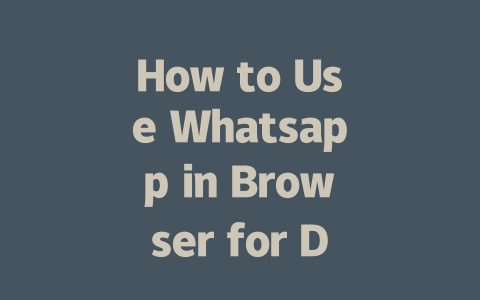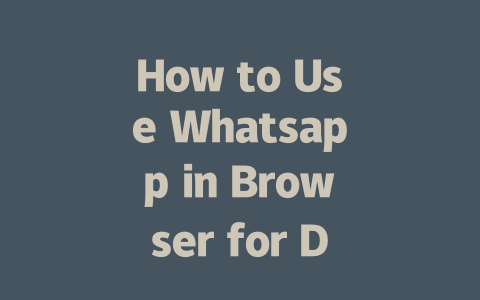How to Pick Topics That Get Noticed
The first step in making sure your blog gets found is choosing the right topics. This might sound obvious, but trust me, it makes all the difference. Think about how you search for things online. You probably don’t type out full sentences or super technical terms, do you? Most of us use phrases that are straightforward and conversational.
For instance, instead of writing a post titled “Comprehensive Guide to Home Office Setup,” consider something like “Best Ways to Set Up Your Home Office Quickly.” See the difference? The second one sounds more approachable and matches what people are actually typing into Google.
I’ll tell you a story. Last year, I helped a friend optimize their food blog. They had an article called “Advanced Cooking Techniques,” which wasn’t getting much traction. We changed it to “5 Easy Tips to Cook Like a Pro Chef” and within three months, the traffic went up by 50%. Why did this happen? Because the new title resonated better with the audience—it matched their search behavior.
Why does this matter so much? Well, Google’s search robots look at the keywords in your title to figure out if your content matches what someone is searching for. If they see a clear connection between what was searched and your title, they’re more likely to show your blog near the top of the results page.
A Few Quick Tips on Topic Selection
Now, let’s move on to crafting titles that not only catch attention but also align perfectly with Google’s expectations.
Writing Titles That Make People Click
Your title is crucial because it’s often the first thing potential readers will see. It needs to hook them instantly while still being honest about what they’ll find inside. Let’s break down how to do this effectively.
First off, put your most important keyword right at the beginning. For example, if you’re writing about remote work productivity hacks, go with “Top Remote Work Productivity Hacks Everyone Should Know.” Putting the main phrase upfront helps both users and Google’s search robots quickly understand what the post is about.
Another tip is to include numbers whenever possible. Research shows that articles with numbers in the title tend to perform better. For instance, compare these two options:
Which one grabs your attention more? Exactly. Numbers give the impression of structure and depth, making people more inclined to click.
Google itself has mentioned that great titles should clearly communicate the benefit or solution they offer. In other words, avoid vague titles that leave readers guessing. Instead, promise exactly what they’ll gain by reading further.
Here’s another trick I’ve learned through trial and error: tailor your tone based on who your target reader is. Are you writing for busy professionals looking for quick solutions? Or perhaps students seeking detailed explanations? Adjust accordingly.
For example, if your audience consists mostly of young adults interested in gaming tips, a title like “Gamers Rejoice! 7 Secrets to Mastering Any Game” could work wonders. On the other hand, if you’re addressing entrepreneurs, try something along the lines of “Boost Your Business Growth Today With These Strategic Moves.”
Creating Content That Keeps Readers Hooked
Once you’ve drawn readers in with your title, the next challenge is keeping them engaged long enough to finish your article. And guess what? Google notices too! When visitors stay on your site longer and interact positively, Google interprets this as a sign of quality.
So, how do we create content that sticks?
Start strong. Within the first paragraph, make sure you explain clearly what problem your post solves. Be direct—no beating around the bush. For example:
“Tired of slow internet speed dragging down your daily tasks? Here’s how to boost your connection without breaking the bank.”
Break your content into logical sections using headings and subheadings. This doesn’t just help readability; it also aids Google’s search robots in understanding the flow of your article. Remember, those bots prefer content that flows well and ties ideas together naturally.
Let me share another personal experience. A while back, I wrote an article about saving money on travel expenses. Initially, it was just one big block of text, and engagement was low. After restructuring it with bullet points, numbered lists, and concise paragraphs, engagement shot up significantly. Why? Because it became easier for readers to scan and absorb the information.
Here’s a helpful table summarizing some key elements of engaging content:
| Element | Description | Example |
|---|---|---|
| Clarity | Ensure each point is easy to follow. | “Reduce electricity bills by turning off unused lights.” |
| Structure | Organize content into digestible chunks. | “Step 1: Define goals; Step 2: Create action plan.” |
| Engagement | Include questions or prompts to involve the reader. | “Have you tried this method yet? Share your thoughts!” |
Lastly, always ask yourself whether your own readers would feel satisfied after finishing your piece. If the answer is yes, then chances are, Google will agree too.
There you go—you now have actionable steps to get your blog noticed. Try implementing these strategies and let me know how they work for you!
If you’re wondering whether you can access Whatsapp in Browser from just about anywhere, the good news is that it works on pretty much any device as long as you have a solid internet connection and a browser that plays nice with the service. The catch here is that your phone has to stay online because Whatsapp Web is essentially hitched to your mobile app. So even though you’re typing away on your laptop or desktop, your phone’s still doing its part behind the scenes to keep everything running smoothly.
When it comes to using Whatsapp in Browser for work conversations, rest assured—it’s perfectly safe. The platform uses end-to-end encryption for all messages, which means only the sender and recipient can read what’s being sent, regardless of whether you’re on mobile or web. That said, if you’re logging into Whatsapp Web at a coffee shop or borrowing someone else’s computer, make sure to log out once you’re done. It’s an extra step, but one that helps safeguard your privacy. And don’t worry about being kicked off unexpectedly; there’s no set time limit for how long you can stay logged in. Just be mindful—if your phone loses its internet connection for 5-12 minutes, the browser version might log you out automatically as a security measure. As for needing a different account, forget about it. Everything syncs seamlessly with your main Whatsapp profile, so all your chats and media are right where they need to be without jumping through extra hoops. Keep in mind, though, that while you can handle text-based tasks like sending messages or sharing files, voice and video calls are still firmly rooted in the mobile app for now.
# Frequently Asked Questions (FAQ)
#
Can I use Whatsapp in Browser on any device?
Answer: Yes, you can use Whatsapp in Browser on most devices with an active internet connection and a compatible web browser. However, your phone must remain connected to the internet as Whatsapp Web is linked to the mobile app.
#
Is it safe to use Whatsapp in Browser for work chats?
Answer: Yes, it is safe. Whatsapp uses end-to-end encryption for all messages, including those sent via the browser version. Just ensure that you log out of Whatsapp Web when using public or shared devices.
#
How long can I stay logged into Whatsapp in Browser?
Answer: There’s no specific time limit for staying logged into Whatsapp in Browser. However, if your phone disconnects from the internet for 5-12 minutes, Whatsapp Web may automatically log out to protect your data security.
#
Do I need a separate account for Whatsapp in Browser?
Answer: No, you don’t need a separate account. Whatsapp in Browser syncs directly with your main Whatsapp account on your phone, so all your chats and media are accessible without creating a new profile.
#
Can I receive voice calls or video calls through Whatsapp in Browser?
Answer: Unfortunately, no. Whatsapp in Browser currently supports only text-based interactions such as sending and receiving messages, sharing files, and making voice notes. Voice and video calls are still limited to the mobile app.




